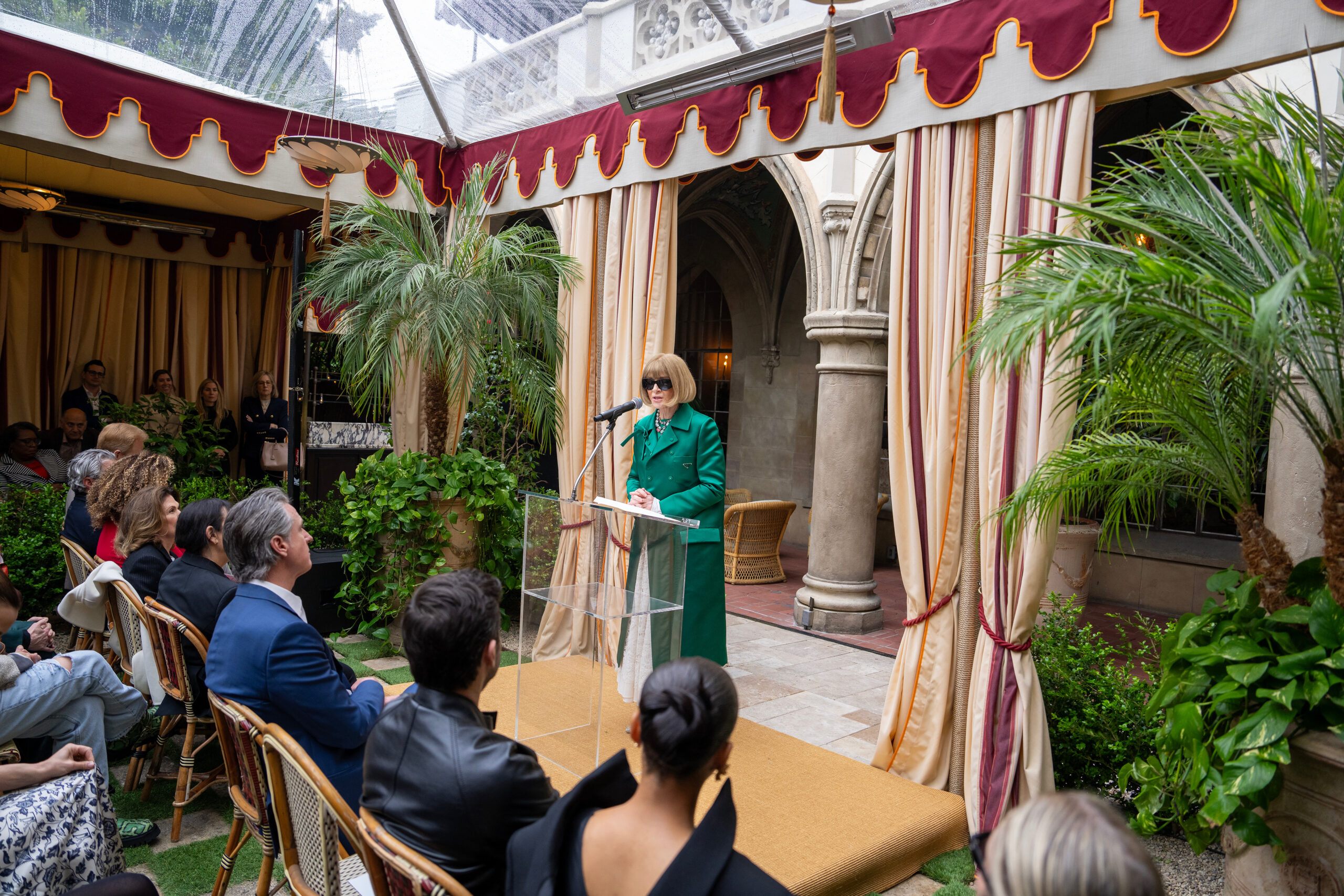Investing in California’s creative economy: Governor Newsom welcomes Vogue World event to Hollywood
Highlights California’s economic investments in creative economy, LA’s recovery
What you need to know: Governor Newsom today joined Anna Wintour to welcome the Vogue World event to Hollywood, promoting the state’s proposal to more than double California’s Film and Television Tax Credit Program.
HOLLYWOOD – Governor Newsom today joined Vogue for the announcement of this year’s Vogue World event, which will be hosted in Hollywood this October. At Vogue’s press event, Governor Newsom joined Anna Wintour, Vogue Editor-in-Chief and Global Chief Content Editor of Conde Nast, to promote the upcoming event, highlighting the state’s world-leading creative economy – which creates 220,000 jobs – and the Governor’s proposal to more than double the California Film and Television Tax Credit Program.
“California is the entertainment capital of the world – and we’re committed to ensuring we stay that way. Fashion and film go hand in hand, helping to express characters, capture eras in time, and reflect cultural movements. We’re honored to welcome Vogue World Hollywood to the Golden State to help us spotlight California’s creative economy and the thousands of talented workers and businesses who support it.”
Governor Gavin Newsom
“Vogue World: Hollywood will be a one-night-only show with a huge cast of models and actors, dancers, musicians and surprises, and it will set great film costumes next to brilliant fashion collections… By mixing fashion with the arts and culture in the center of a city, and by raising funds for a cause, Vogue World has become a runway show-as-rallying cry, a way to fix the attention of a huge global audience, to bring awareness, and sound an unmistakable note of positivity, creativity, and hope.”
Anna Wintour

Lights, cameras, jobs!
Since its inception in 2009, California’s Film & Television Tax Credit Program has generated over $26 billion in economic activity and supported more than 197,000 cast and crew jobs across the state, strengthening the vital link between California’s communities and the iconic film and TV industry. A study of the program found that, for every tax credit dollar approved, it generated at least $24.40 in output, $16.14 in GDP, $8.60 in wages, and $1.07 in initial state and local tax revenue from production in the state.
However, the program has been oversubscribed year after year, with more productions applying than can be accommodated under the current cap. Between 2020 and 2024, data shows California lost production spending due to limited tax credit funding and increased competition in other states and countries, directly impacting state jobs and local economies.
In recent years, projects that were unable to secure California’s tax credits and moved to other locations as a result contributed to significant economic losses, with California losing 71% of production spending by these rejected projects subsequently filming out-of-state.
The Governor’s proposal to expand California’s Film & Television Tax Credit Program to $750 million annually, a massive increase from the current $330 million annual allocation, would position California as one of the top states for capped film incentive programs.

California is a creative economy powerhouse
As one of the strategic sectors outlined in the recently launched California Jobs First Economic Blueprint, the creative economy has deep roots in California’s history and continues to be an engine for innovation, cultural expression, and economic growth.
- In 2023, California was home to 220,000 creative economy jobs, one in every four creative economy jobs in the U.S.
- The average salary paid to creative workers in 2023 was $160,000, more than 50% higher than the California average.
And while the Los Angeles region leads the way in jobs generated by the creative economy, three other regions – Redwood, the Bay Area, and the Southern Border – also identified film, TV, and the arts as a regional strategic sector.
